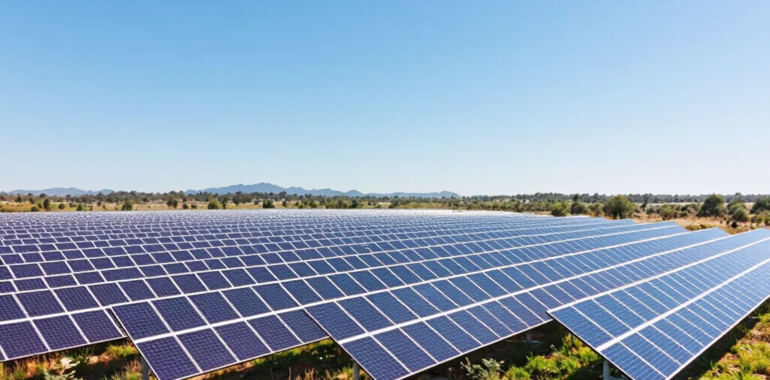
Solar Farms Under Fire: Environmental Saviour or Silent Threat?
Solar farms are widely praised as a clean energy solution, but are they as eco-friendly as they seem? While they generate renewable energy and reduce reliance on fossil fuels, concerns about land use, habitat destruction, and waste management have sparked debate. Are solar farms truly the green future we need, or do they come with hidden environmental costs?
The Promise of Solar Farms
Solar farms play a crucial role in the transition to renewable energy. Here’s why they are considered a game-changer:
- Clean Energy Production – Solar farms harness the sun’s power, reducing greenhouse gas emissions and combatting climate change.
- Lower Energy Costs – Large-scale solar installations help drive down electricity prices by producing abundant, low-cost energy.
- Job Creation – The solar industry generates thousands of jobs in construction, maintenance, and technology development.
Despite these advantages, solar farms are not without controversy.
Land Use and Habitat Destruction
One of the biggest concerns surrounding solar farms is the amount of land they require. Utility-scale solar projects often span hundreds or even thousands of acres, leading to:
- Deforestation – Clearing land for solar farms can destroy natural habitats, displacing wildlife and disrupting ecosystems.
- Agricultural Displacement – Farmland used for food production is sometimes converted into solar farms, raising concerns about food security.
- Soil Degradation – The installation of solar panels can lead to soil compaction, erosion, and reduced fertility.
Some projects mitigate these issues by using agrivoltaics, a method where solar panels are integrated with agricultural land to allow crops or livestock to coexist with solar energy production.
Solar Panel Waste: A Growing Problem
While solar panels provide clean energy, they don’t last forever. The average lifespan of a solar panel is around 25-30 years, leading to concerns about electronic waste (e-waste). The key issues include:
- Toxic Materials – Some panels contain hazardous substances like lead and cadmium, which can leach into the environment if not properly disposed of.
- Recycling Challenges – Current recycling infrastructure for solar panels is limited, leading to a growing stockpile of decommissioned panels.
- End-of-Life Management – Without strict regulations, many panels end up in landfills instead of being responsibly recycled.
Water Usage and Pollution
Although solar farms don’t require water to generate electricity, they still contribute to water-related environmental impacts:
- Water Consumption – Some solar farms, particularly those using concentrated solar power (CSP) technology, require significant water for cooling.
- Chemical Runoff – Cleaning solar panels with detergents and water can introduce pollutants into nearby water sources.
- Heat Island Effect – Large-scale solar installations can alter local temperatures, impacting surrounding ecosystems.
Are Solar Farms the Future?
Despite their challenges, solar farms remain a critical part of the global renewable energy strategy. Innovations in solar panel recycling, dual-use land strategies, and community-driven solar projects are helping to address concerns and make solar farms more sustainable.
Final Thoughts: A True Solution or a Hidden Problem?
Solar farms offer a clean energy alternative, but they are not without environmental trade-offs. As the world shifts to renewable energy, it’s crucial to address these challenges to ensure solar farms truly contribute to a sustainable future.
What do you think? Are solar farms a necessary solution, or do they pose more harm than good? Let’s discuss in the comments!
